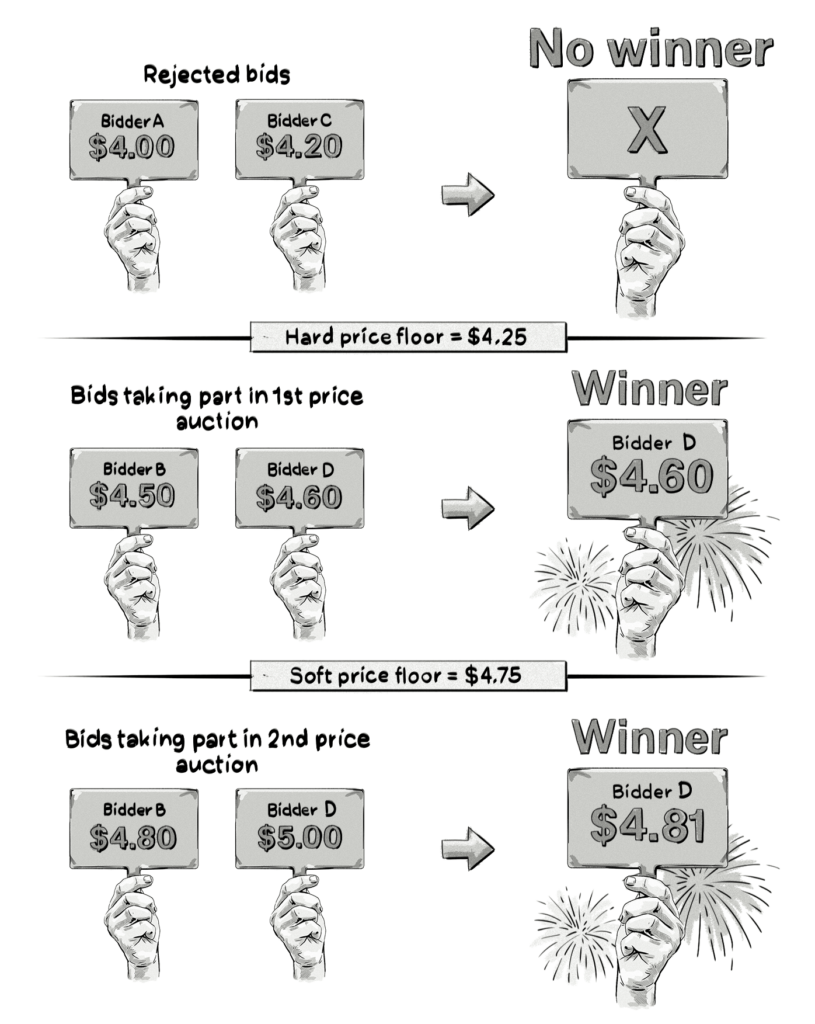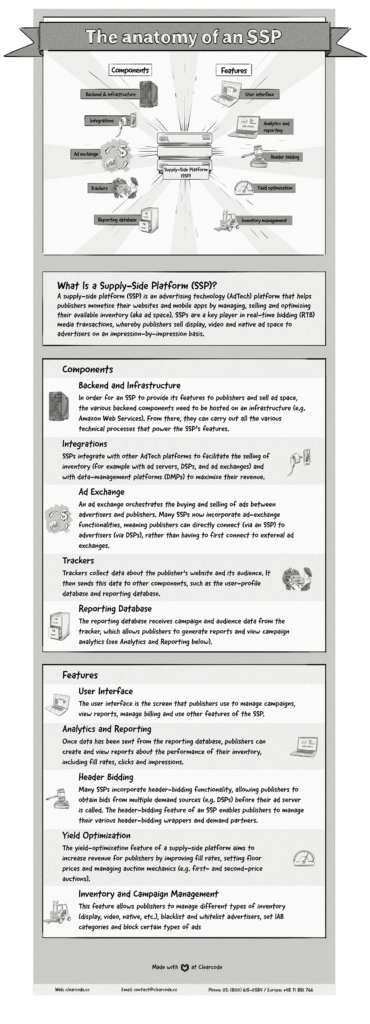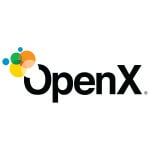When publishers first began their exodus from print media towards digital, they started looking for new ways to generate revenue. The most intuitive revenue model was the one they had already been using in print – advertising.
Display advertising came about to replicate printed ads in the online world and enable website monetization, which is the bread and butter of digital media today.
Conversely, advertisers were looking for relevant publisher websites which could display ads to their target audience.

Initially, publishers sold space to advertisers via direct sales by finding advertisers willing to display their ads on their websites. However, as the display-ad industry grew, a completely new problem emerged. Direct sales brought about the problem of fill risk; because some inventory could end up unsold, there was a need for an intermediary, a technological platform that would efficiently sell remnant inventory and automate the process. That’s where the ad network came in.
An ad network is a technology platform that serves as a broker between publishers and advertisers. As more ad networks emerged, new technology platforms came about as well: network optimizers. These AdTech platforms were responsible for making decisions about which ad network would deliver the best performance – i.e. sell the publisher’s inventory at the best price.
When real-time bidding (RTB) was introduced in the late 2000s, network optimizers morphed into a new type of AdTech platform, which we know today as supply-side platforms (SSPs).
The SSPs of today not only allow publishers to sell their inventory to the best ad network, but they are also a key part of the RTB process, as they allow publishers to optimize yield by simultaneously connecting their inventory to multiple ad exchanges and demand-side platforms.
We Can Help You Build a Supply-Side Platform (SSP)
Our AdTech development teams can work with you to design, build, and maintain a custom-built supply-side platform (SSP) for any programmatic advertising channel.
What is a Supply-Side Platform?
A supply-side platform is an advertising technology (AdTech) platform used by publishers to manage, sell and optimize available inventory (aka ad space) on their websites and mobile apps in an automated and efficient way. By using an SSP, publishers can show display, video and native ads to their visitors, and monetize their website and apps.
Over the years, SSPs have expanded their functionalities, with many now including ad-exchange mechanisms, allowing publishers to connect to DSPs directly rather than connecting via other ad exchanges.
Where Do SSPs Sit in the Online Advertising Ecosystem?
SSPs are one of the main players in the online advertising ecosystem and play a key role in RTB media transactions. They connect to ad exchanges, ad networks, data-management platforms (DMPs) and demand-side platforms (DSPs) to sell ad inventory on behalf of publishers (e.g. websites and app owners).
SSPs help publishers manage the complexity and volatility of the programmatic ad-buying process, especially when managing multiple ad networks and their diverse requirements and limitations.
There are a number of processes and requirements SSPs automatically handle, including:
- Real-time bidding transactions: SSPs sell a publisher’s inventory to DSPs via ad exchanges (more on that below).
- Ad-network optimization: Although a publisher may have a variety of ad networks ready to buy the inventory, each network may have slightly different requirements. One network will pay a $2.00 CPM but only fill 20% of the time, another network will pay $1.00 CPM and fill 70% of the time, and another network will only pay $0.50 but fill 100% of the time. Based on this historic information, an SSP will determine which ad network to connect to when impressions become available on a publisher’s website.
- Frequency capping: SSPs and DSPs often sync and match cookies to run frequency capping, which is the process of recording the number of times a specific visitor is shown a particular advertisement and then limiting the number of times that visitor sees that ad. This restriction is applied to all websites that serve ads from a campaign in a DSP.
- Some ad networks accept impressions from select geographies. With an SSP, the publisher can make sure that only relevant ad networks are considered in the process
- Managing ad networks’ varying levels of latency and other discrepancies: An SSP platform automatically selects ad networks that consistently offer the best level of latency, which improves the overall real-time bidding process. (Not without reason were SSPs originally called Network Optimizers.)
SSPs take care of the above variables (sometimes using advanced algorithms) and predict which network will provide the highest effective yield at a given time. They also streamline the ad-buying and displaying process. It limits latency, increases yield, and takes a huge burden off ad-operations (AdOps) teams.
How Does a Supply-Side Platform (SSP) Work?
SSPs can sell a publisher’s inventory in various ways – for example, directly to ad networks, via direct deals with DSPs and perhaps most commonly, via RTB auctions.
Here’s a brief overview of how publishers use supply-side platforms to sell their inventory during RTB:
- A publisher makes its ad inventory available on an SSP.
- Each time the publisher’s webpage loads, an ad request is sent to multiple ad exchanges and sometimes straight to demand-side platforms, either directly from the webpage to an SSP or from the publisher’s ad server to an SSP.
- In the case of RTB media buys, various DSPs would place bids on the impression being offered by the publisher (as shown in the image above).
- The winning bid is then delivered to the website via the SSP and displayed to the visitor.
What Advantages Do SSPs Provide Publishers?
SSPs interface with publishers and offer a number of benefits.
Automated selling of inventory: Publishers can sell all of their inventory to advertisers, including display, video and native ad space on both desktop and mobile devices. SSPs (and DSPs on the advertiser’s side) help streamline the process of selling and buying inventory by completely removing manual work from the process.
Because machines handle every transaction, publishers of all sizes can use SSPs to monetize their website and apps; an SSP can sell five impressions on a small e-commerce website as well as sell millions of impressions on a large publisher website. However, some SSPs require publishers to have a minimum number of impressions or website traffic to use their platform.
Reporting: SSPs give publishers details on who is bidding, how much their inventory is being bought for, and how much individual advertisers are buying. This offers deeper insights about the value of their inventory for particular advertisers.
Aggregation of multiple networks: SSPs help to combat the problem of driving the value of inventory down if there are not enough bidders coming from a single ad network or ad exchange. SSPs (by connecting to multiple networks, ad exchanges, and DSPs) allow more buyers to take part in the real-time bidding process, and possibly help achieve better yield.
Yield optimization with price floors: It’s no surprise that publishers are trying to regain some of the lost revenue caused by the reduction (the difference between the bid price and the clearing price) in second-price auctions. SSPs not only allow publishers to offer their inventory to more buyers, but also give them better control of pricing. “Price floors” ensure that their inventory is not sold under certain price.
Some SSPs and ad exchanges are beginning to implement a combination of soft and hard price floors, essentially converting the auction into a hybrid between first- and second-price auctions. We’ve written about this in another post on our blog.

Brand safety: By acting as an intermediary, SSPs offer better brand safety for publishers by blocking unwanted ads from showing on their website. This could be done by “blacklisting” certain IAB categories, advertiser domains, or selected creatives. SSPs can be set, for example, to only offer inventory to specific buyers, or through specific channels. Some publishers would rather run house ads than show an inappropriate ad.
What Are The Main Features and Components of an SSP?
We list the main features and components of an SSP in our infographic. Click here to open this SSP infographic in a new tab.

What Are the Main SSP Companies?
Choosing an SSP company might depend on the strategy, goals, budget, type of campaign and targeted audience. Each platform has unique features, fees and customer ratings. Popular companies that currently offer SSP technology include:






Custom Supply Side Platforms
While the above SSPs offer a range of features for publishers to monetize their website, there are a number of benefits in building your own SSP, including:
Ownership of data and technology. By building a custom SSP, publishers can gain control of not only the technology, but also the data. This is particularly beneficial for companies that have run multiple websites.
Elimination of fees and commissions. Building your own SSP won’t eliminate all of the fees and commissions involved in the online media-buying process, but it will certainly eliminate the known and hidden fees charged by SSP vendors.
Control of the product’s roadmap. Most SSPs come packed with features, but they are often not one-size-fits-all platforms. For companies with specific use cases, building an SSP allows them to have full control over the product’s roadmap and to build only the features they want and need.
Final Thoughts
Supply-side platforms provide a programmatic way to deal with the ever-expanding array of AdTech platforms and variables in the programmatic ecosystem. Changing fill rates, yields, price floors, brand safety – all of this wouldn’t be possible without a fully automated platform.
We Can Help You Build a Supply-Side Platform (SSP)
Our AdTech development teams can work with you to design, build, and maintain a custom-built supply-side platform (SSP) for any programmatic advertising channel.








